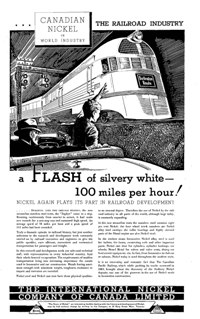The Globe and Mail is Canada’s national newspaper with the second largest broadsheet circulation in the country. It has enormous impact and influence on Canada’s political and business elite as well as the rest of the country’s print, radio and television media.
This article was the cover story of the March 26, 2010 edition of the Globe and Mail’s monthly Report on Business magazine.
Down the road from the Copper Cliff smelter, where the Inco Superstack reaches 380 metres into a clear winter sky, striking Steelworkers stamp their heavy boots and feed a smoking fire pit with scrap wood. Massive ore trucks, engines growling, wait for permission to drive through the picket line. It is a familiar ritual; after 10 or 15 minutes, the picket captain signals the drivers to proceed and go about their business at the smelter—their business being strikebreaking.
When Local 6500 of the United Steelworkers walked off the job at the Vale Inco nickel mines, it was mid-July. The progression from agreeable summer weather to minus 20 C has been brutal. The best to be said about minus 20 is that it’s better than minus 30, just like strike pay of $200 a week is better than no pay at all. It’s hardly surprising that there’s little of the bravado that usually sustains picket lines.
The downbeat atmosphere may also reflect a sense among the strikers that the world has changed and that their strike has not been noticed by Canadians. There have been many strikes in Inco’s history—but every other one was decided in Canada. Now Inco is a subsidiary of a company based far away.
If the long stalemate in Sudbury had a sound, it might be that of the other shoe falling. When the takeover binge of the mid-2000s saw many of Canada’s pre-eminent companies disappear into foreign hands, the debate over the “hollowing out” of the domestic economy was muted. After all, Vale, like other acquisitors, made undertakings to preserve jobs and, in fact, to carry on much like before.
Now, it appears, things look very different to Vale.

























 With a veritable treasure store beneath its feet, Sudbury
With a veritable treasure store beneath its feet, Sudbury
 This brave New World of ours may be bringing the world-order architects down with the jitters, but no one is going to convince Mr. and Mrs. Job Public that it doesn’t have the gaudiest surface glitter they have ever seen.
This brave New World of ours may be bringing the world-order architects down with the jitters, but no one is going to convince Mr. and Mrs. Job Public that it doesn’t have the gaudiest surface glitter they have ever seen. Prosperity, modernity, pioneer color and a relief problem
Prosperity, modernity, pioneer color and a relief problem